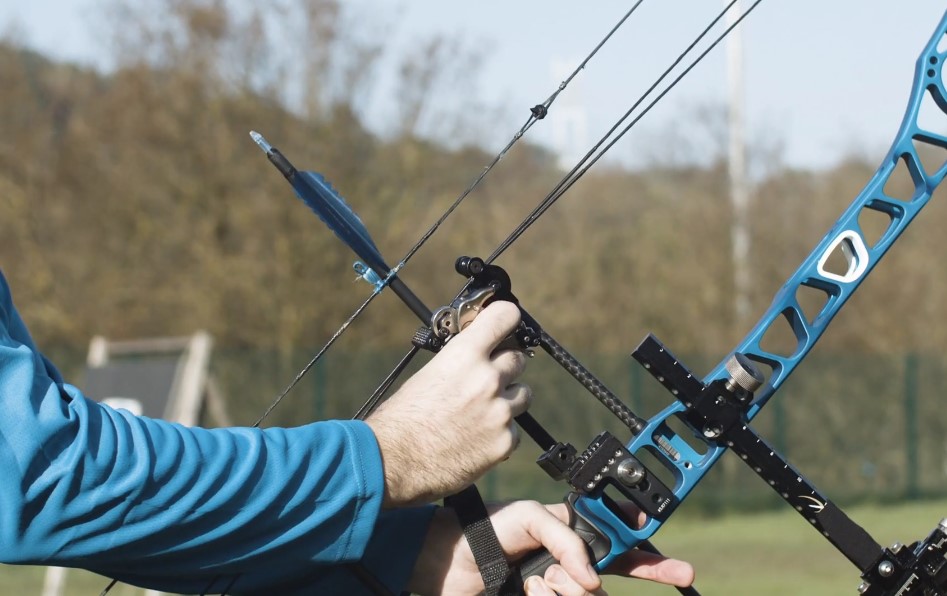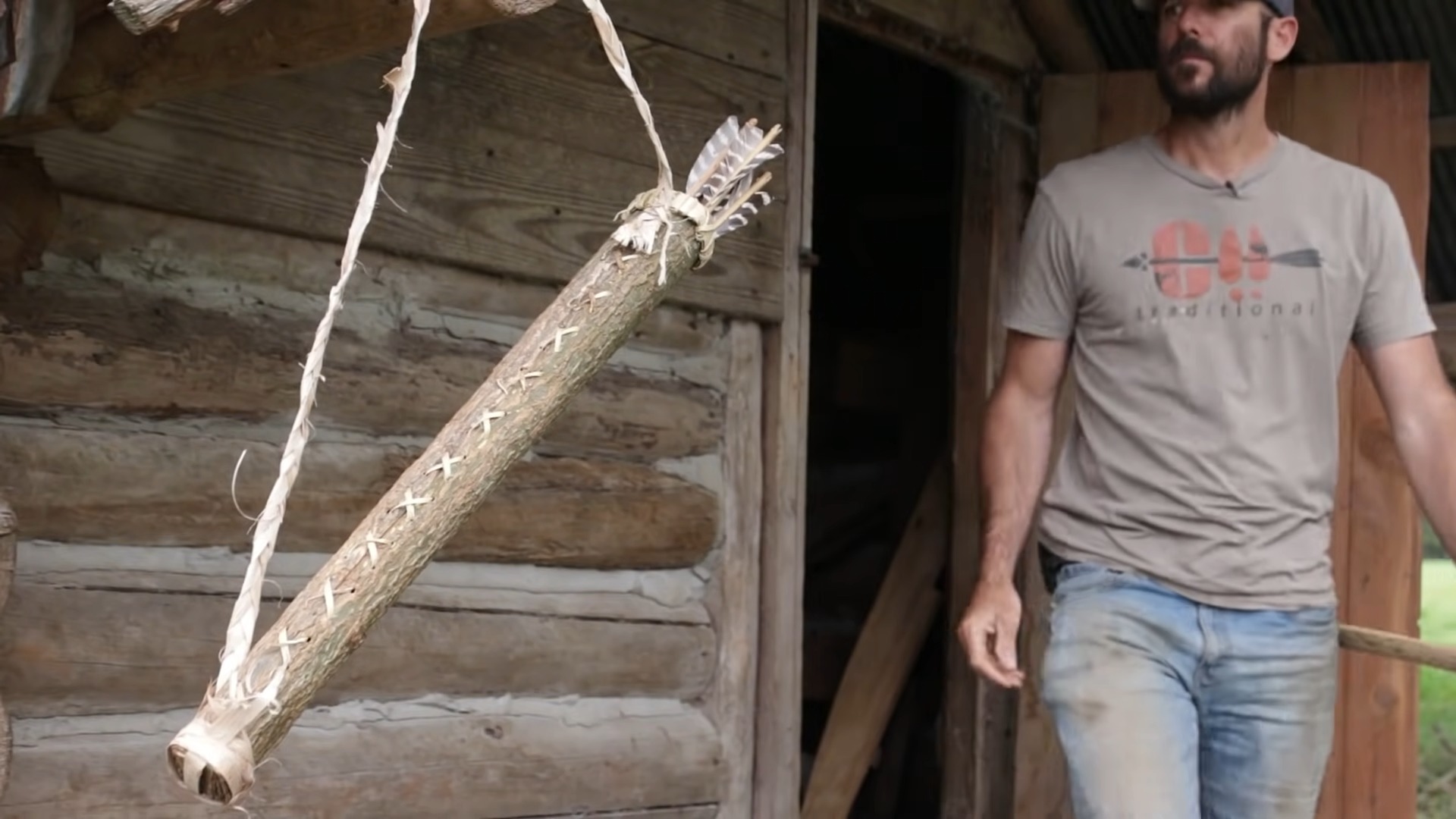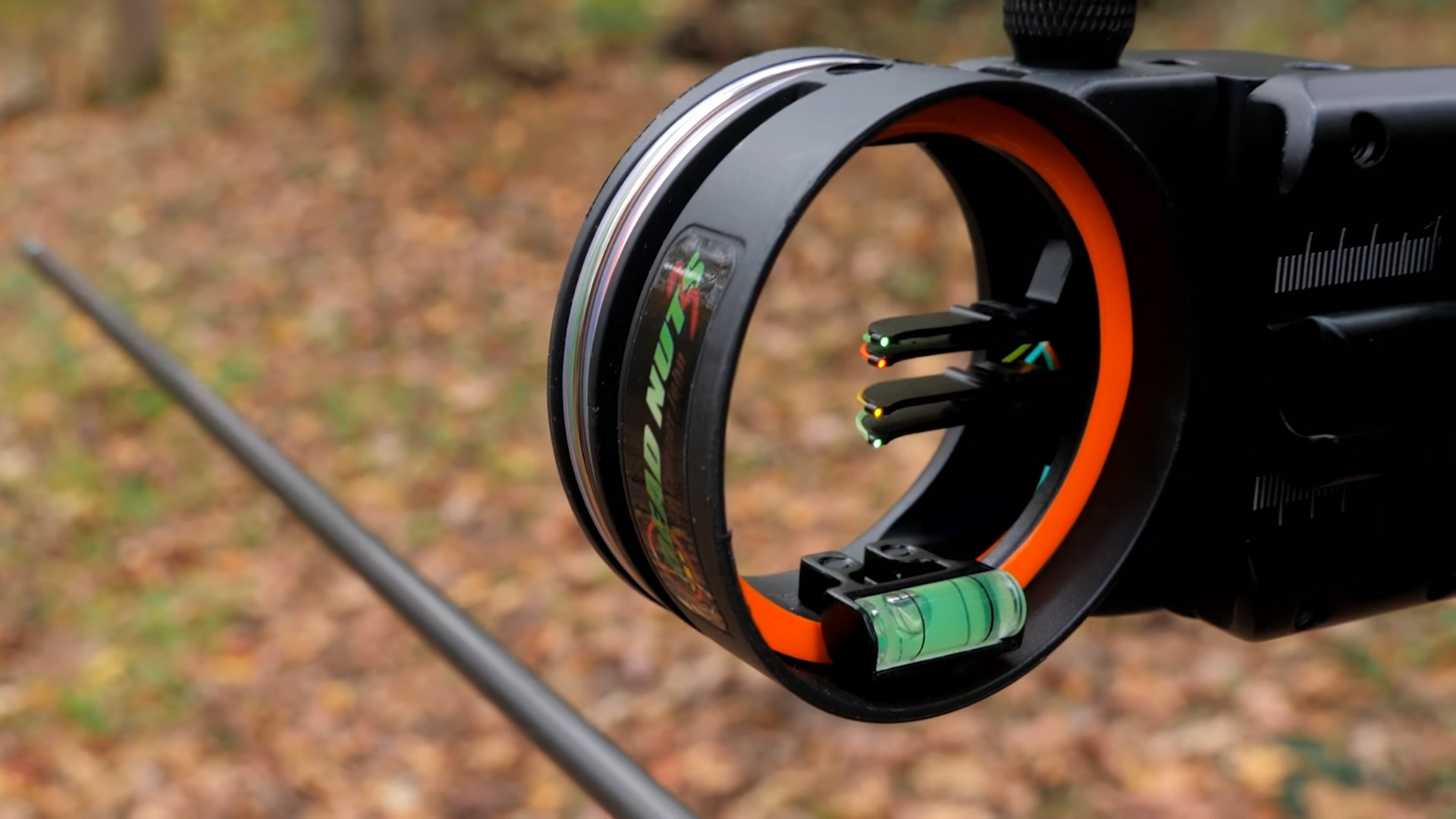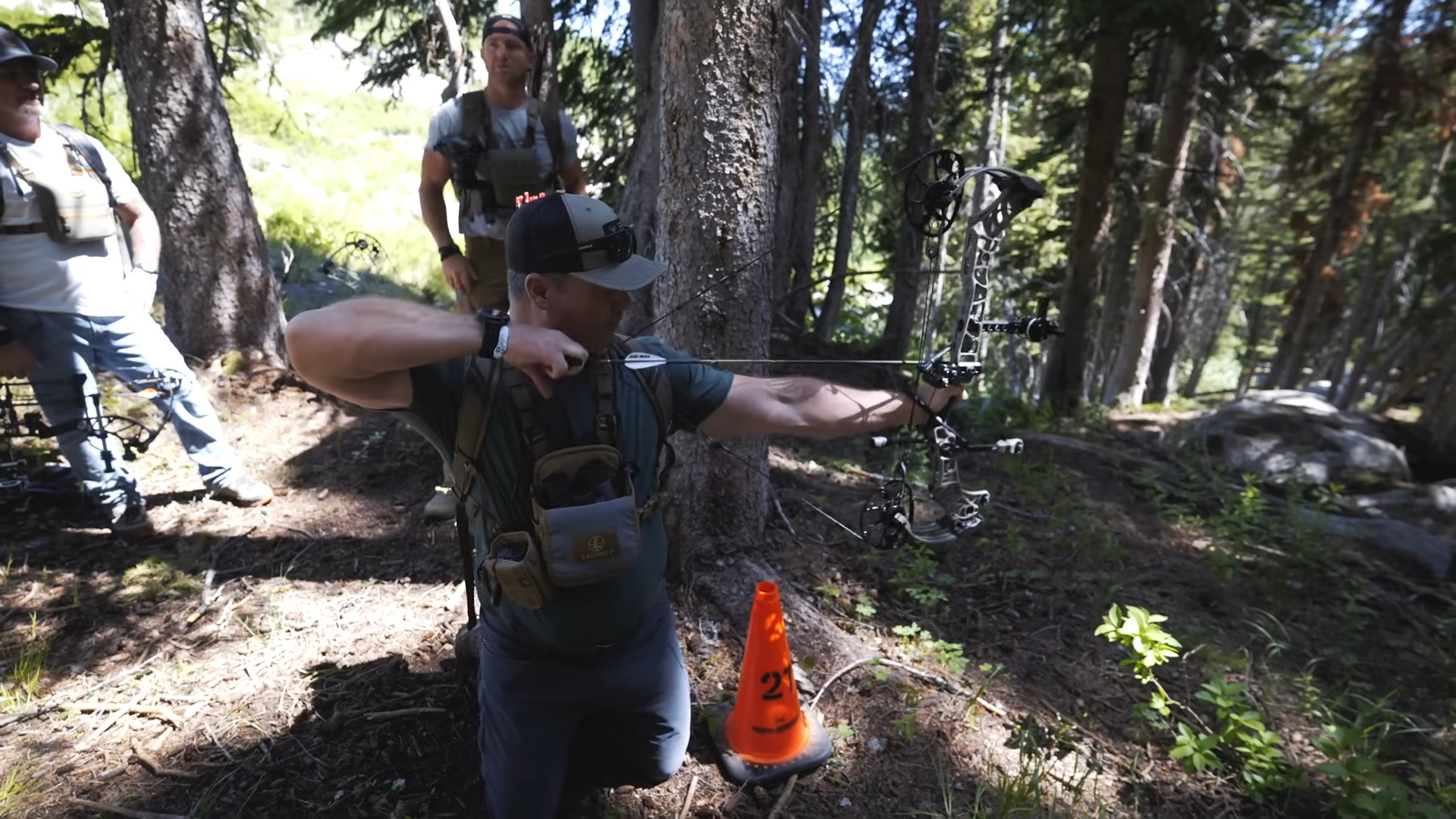In my years of observing arrows cleave the air, coaching archers to finesse their form, and witnessing the quiet confidence that comes with the perfect pairing of archer and equipment, I’ve gathered insights that transform decent shots into extraordinary ones.
The pursuit of the perfect shot begins with a choice—selecting gear that feels like an extension of your will. With a keen eye for the subtlest details, from the nuances of a bow’s limb alignment to the meticulous selection of an arrow’s fletching, I have seen how the right equipment acts as the silent ally of an archer.
Whether you’re navigating the rich traditions of archery or charting your own path across its modern landscape, the mastery of your gear is as essential as the mastery of your technique. Today, I will take you on this journey of selection and craftsmanship, where precision gear meets the steadfast aim.
Finding Your Perfect Bow

Selecting a bow is much like choosing a dance partner: compatibility is key. Your bow should match your body’s measurements and strength. An ill-fitting bow can lead to poor shooting form, decreased accuracy, and even injury. Begin with determining your draw length and weight. These measurements ensure the bow will be an extension of your body rather than a hindrance.
Recurve vs. Compound Bows
Each type of bow offers a different shooting experience:
- Recurve Bows: Traditional, simple design used in the Olympics. Great for learning the basics and improving technique.
- Compound Bows: Modern, with a system of pulleys. They require less physical strength to hold at full draw, allowing for greater focus on aiming.
Choosing between the two usually comes down to your intended use. Recurve bows are suited for traditional archery and competition, while compound bows are the go-to for hunting and modern sport archery.
Considerations for Bow Selection
When purchasing a bow, remember these key aspects:
- Quality: Invest in a reputable brand to ensure longevity and reliability.
- Purpose: Your bow should fit your primary archery activities.
- Budget: Allocate funds wisely—more expensive doesn’t always mean better, especially for beginners.
Arrows

Matching Arrows to Your Bow
Your arrows are as important as your bow. They must be compatible with the bow’s draw weight and length. Here’s what to keep in mind:
- Arrow Length: Should match your draw length plus or minus an inch.
- Spine (Stiffness): Must be appropriate for the draw weight of the bow to ensure accurate flight.
Types of Arrows
Arrows come in different materials, each with its pros and cons:
- Aluminum: Durable and consistent, great for beginners and indoor shooting.
- Carbon: Lightweight and fast, favored by hunters and outdoor shooters.
- Wood: Traditional, mostly used with recurve bows in historical archery.
Choosing Arrow Components
Arrows are made of more than just a shaft. The fletching, nock, and point type also influence performance:
- Fletching: Plastic vanes are durable and perfect for compound bows, while feathers are traditional for recurve bows.
- Nock: Ensure it fits snugly on the bowstring without being too tight.
- Point: Field points for practice and broadheads are essentials for hunting.
Essential Accessories for Archers

Protective Gear
Archery can be tough on the body. To prevent injury and discomfort, don’t overlook protective gear:
- Arm Guard: Protects your forearm from string slap.
- Finger Tab/Glove: Protects your fingers from the bowstring.
Aiming Aids
Aiming aids can greatly enhance your accuracy. Here’s a brief look at some popular options:
- Sights: Help align the bow for precise shooting. There are simple pin sights for beginners and sophisticated target sights for competitors.
- Stabilizers: Reduce bow movement during and after the shot, improving accuracy.
Additional Tools
Several other tools can also enhance your archery experience:
- Quiver: For holding arrows.
- Bow Case: For transporting and protecting your gear.
- String Wax: For maintaining the bowstring.
Each accessory should be chosen based on personal preference and the type of archery you practice.
The Art of Maintenance
Regular Bow Care
Proper maintenance extends the life of your bow. Regularly inspect the bow for any signs of wear or damage, especially before and after use. Keep the string waxed and replace it as soon as it shows signs of fraying. Store your bow properly, in a cool and dry place, to prevent warping or other damage.
Keeping Arrows in Top Condition
Arrows also demand attention. Inspect them for straightness, and ensure that the fletchings are intact and the nocks are not cracked. Store them in a quiver or an arrow tube to protect them from bending or breaking.
Archery for Different Disciplines

Target Archery Gear
Target archery, the style you’ll see in the Olympics, is all about precision. Equipment here is specialized:
- Bows: Recurve bows are standard, with long stabilizers and advanced sights.
- Arrows: Lightweight carbon or aluminum arrows with a small diameter for reduced wind drift.
Competitive archers often use a clicker, a device that indicates when the arrow has been drawn to the correct length, ensuring consistent draw length for each shot.
Bowhunting Equipment
Bowhunting requires gear that can withstand the rigors of the outdoors and deliver lethal force:
- Bows: Compound bows dominate due to their power and ease of use when holding a draw.
- Arrows: Hunters prefer heavier carbon arrows for their penetrating power and broadheads designed to ensure a quick and ethical kill.
Camouflage for both the archer and the bow is also crucial in hunting to remain undetected by game.
Traditional Archery Essentials
Traditional archery brings us back to the sport’s ancient roots, focusing on simplicity:
- Bows: Longbows and traditional recurves without modern accessories.
- Arrows: Wood is the material of choice, often with feather fletching for an authentic experience.
Many traditional archers forgo modern aiming devices, relying instead on instinctive shooting.
Advanced Tips for Gear Optimization

Fine-Tuning Your Equipment
Precise tuning of your gear can lead to significant improvements in accuracy:
- Bow Tuning: Adjusting the bow’s limbs, the tension of the string, and the arrow rest for optimal arrow flight.
- Arrow Tuning: Fletching arrows with the correct helical twist can improve stability, and using the right point weight can affect how the arrow flexes during flight.
The Role of Technology in Archery
Advancements in technology have brought about tools that can refine your archery skills:
- Laser Tuning Tools: For aligning sights and ensuring the bow is squared.
- High-Speed Cameras: To analyze shooting form and arrow flight.
Mental and Physical Training
Besides gear, an archer’s mind and body must be in top shape. Consistent practice, mental visualization, and physical conditioning are paramount for any archer aiming for peak performance.
Community and Support

Joining Archery Clubs
Engaging with a community of archers can offer support and shared knowledge. Clubs provide:
- Advice: Seasoned archers can offer personalized tips on gear and technique.
- Resources: Many clubs have equipment for members to use, saving costs for beginners.
Archery Events and Competitions
Participating in events is not only fun but also educational. Competitions will:
- Challenge You: They push you to perform under pressure, improving your skills.
- Connect You: Events are a hub for networking with manufacturers, retailers, and fellow archers.
FAQs
How often should I replace my bowstring?
Generally, bowstrings should be replaced every 2-3 years if you shoot regularly. However, the lifespan can vary based on the frequency of use, care, and storage conditions. If you notice fraying, stretching, or any other damage before this time, replace the string immediately to maintain optimal performance and safety.
Can I use the same arrows for both a recurve and a compound bow?
While you technically can use the same arrows for both types of bows, it’s not optimal. Arrows are often specifically designed for the type of bow and its draw weight. Compound bows typically require stiffer arrows due to the higher draw weight, whereas recurve bows can use less stiff arrows. Always check the manufacturer’s recommendations for compatibility.
Is there a recommended brace height for my bow, or is it a personal preference?
Brace height, the distance from the deepest part of the bow grip to the string, is usually recommended by the bow manufacturer and should be adhered to for optimal performance. It’s not purely a matter of personal preference, as incorrect brace height can affect arrow flight and the overall feel of the shot.
How do I know if my arrows are the correct spine for my bow?
To determine the correct arrow spine, you need to consider your bow’s draw weight and your draw length. Manufacturers provide spine selection charts that match their arrow models to these variables. Additionally, you can perform a paper test to check if your arrows are too stiff or too flexible. If the arrow tears the paper cleanly, the spine is likely correct. If the tear is irregular, adjustments might be needed.
What is the best way to store my archery gear when not in use?
Store your bow horizontally on a bow rack to prevent limb warping. Keep it in a cool, dry place away from direct sunlight and extreme temperatures. Arrows should be stored in a quiver or tube to keep them straight and prevent damage. Always loosen the limbs of a traditional bow or the tension on a compound bow’s limbs when not in use to maintain the bow’s integrity.
Do I need to use a bow press to replace my bow’s string or cables?
For compound bows, yes, a bow press is typically required to safely replace strings or cables due to the high tension. However, for traditional recurve or longbows, you can usually replace the string without a bow press. If you’re unfamiliar with using a bow press, it’s best to have a professional do it to avoid damaging your bow or injuring yourself.
Final Words
Armed with knowledge and the right gear, you’re now set to step into the world of archery, whether for competitive sport or the thrill of the hunt. Remember, the perfect archery gear is a blend of personal comfort, the type of archery you enjoy, and the commitment to maintain your equipment in top shooting condition.
I’m Matt, and I’ve been with GearDesciple for about five years after my brother Jared roped me in. I wasn’t always into the outdoors, but a few reluctant hikes turned into a real passion. Now, I help test and review gear with a focus on honest, experience-based advice. As someone who came to outdoor life later on, I’m especially driven to help newcomers find their footing.